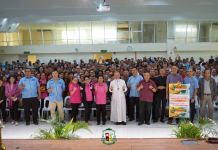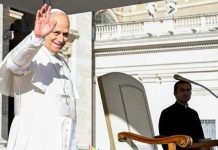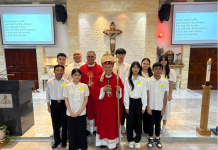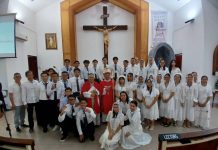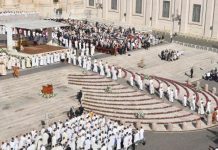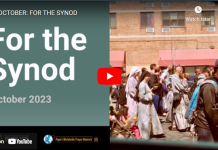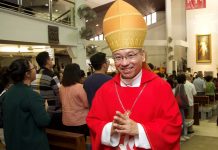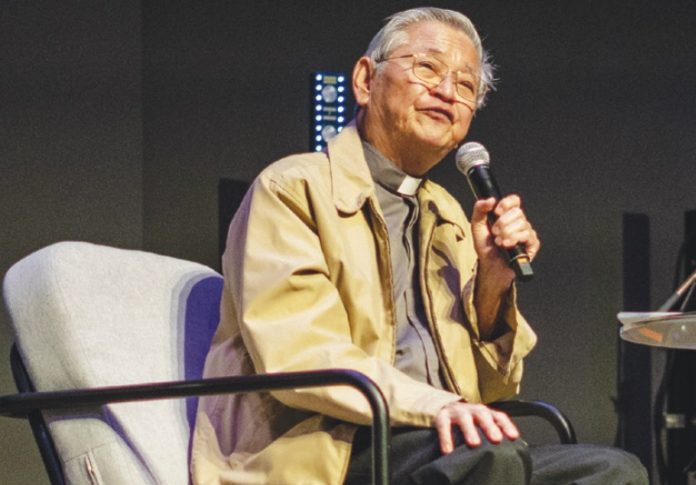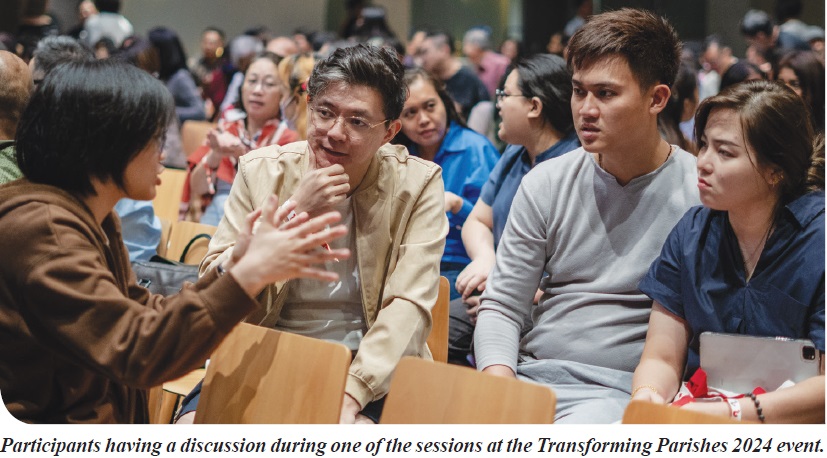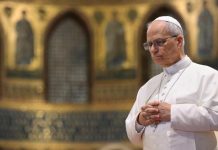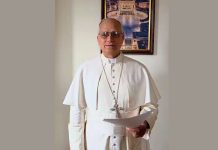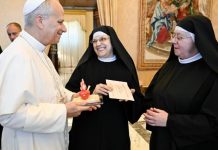Archbishop Emeritus John Ha of Kuching (pic) was one of the speakers at the Transforming Parishes 2024 (TP24), hosted by the Alpha Hub in Kuala Lumpur as part of the wider Alpha Regional Gathering (ARG). The archbishop emeritus addressed various aspects of leadership within the Church, focusing on leadership succession, servant leadership, and decision-making. The session concluded with a Q&A segment, where attendees sought the prelate’s insights on these critical issues. We feature some highlights of his talk.
KUALA LUMPUR — Archbishop Emeritus (ABE) John Ha began by recounting his own experience of passing the baton to his successor, Archbishop Simon Poh in 2017. Observing the capability of younger bishops, he felt it was time for a change and requested the Holy Father’s approval for his resignation from the Archbishop’s Office, ahead of the canonical age. The subsequent appointment of Archbishop Simon, who was at that time the auxiliary bishop, was a testament to the careful discernment and consultation involved in such decisions.
During the succession Mass, an unexpected incident occurred when ABE John’s pectoral cross became snagged and broke as he kissed the altar at the beginning of the service. The prelate saw this as a divine sign supporting his decision to retire early. However, he shared a humorous anecdote, when he was later approached by a Chinese catechist who remarked in Mandarin, “You’re so lazy, retiring so early,” offering a different interpretation of the event – ABE John had chosen to retire at 70, ahead of the canonical age of 75.
Biblical Foundations of Leadership Succession
Turning to the biblical foundations of leadership succession, ABE John emphasised the necessity of such transitions due to the impermanence of earthly life and the need for effective and new leaders in cases of ineffective or self-serving leadership. He referenced three key biblical examples: Moses appointing Joshua, Jesus selecting His apostles, and the replacement of Judas by Matthias.
1. Moses to Joshua – A Model of Succession
In the Old Testament, the succession of Moses by Joshua serves as a foundational example of leadership transition. As Moses neared the end of his life and, recognising his age and limitations, he appointed Joshua as his successor. Deuteronomy 34 describes how Moses ascended Mount Nebo to view the Promised Land before his death. In a significant act, Moses laid hands on Joshua, a gesture symbolising both human preparation and divine endorsement. This act endowed Joshua with wisdom and leadership, marking the transition of authority. God’s assurance to Joshua, as described in the Book of Joshua, reaffirmed the divine approval of this succession.
2. Jesus and the Apostles – Formation and Appointment
The New Testament provides a foundational example of leadership succession through Jesus’ deliberate selection of the twelve Apostles. This process, described in the Gospels of Matthew, Mark, Luke, and John, was marked by prayer and discernment, emphasising the importance of divine guidance in leadership decisions. According to Luke 6:12-16, Jesus spent a night in prayer on a mountain before choosing the twelve Apostles, symbolising the continuity of God’s covenant with the twelve tribes of Israel.
Jesus’ choice of the Apostles was guided by divine inspiration, and He personally formed them through His teaching, example, and hands-on experience. By naming the Apostles, Jesus assigned them unique roles and responsibilities to continue His mission. This selection not only demonstrated a model of leadership formation but also set a standard for leadership development, ensuring the continuity of His work of salvation.
3. Matthias – The Role of the Holy Spirit in Succession
After Judas Iscariot’s betrayal and death, the remaining Apostles needed to select a successor. In Acts 1, Peter addressed the group, emphasising the need to fulfil Scripture and find someone who had been with Jesus from His baptism to His resurrection. Two candidates were proposed – Barsabbas and Matthias. After prayer and casting lots, Matthias was chosen to complete the number of Apostles. The election of Matthias underscores the importance of prayer and the Holy Spirit’s role in guiding the selection process.
The mark of a leader
ABE John emphasised the importance of servant leadership, highlighting that true leaders should be filled with the Holy Spirit and focused on building up the community, rather than seeking self-glorification. He stressed that the Holy Spirit plays a crucial role in leadership succession, ensuring that leaders are both well-prepared and spiritually equipped to serve. If a leader fails to serve effectively, succession becomes necessary to meet the community’s needs and continue its mission. True Church leadership involves serving with humility, using one’s gifts for the common good, and following the Spirit’s guidance to fulfil the Church’s mission.
In his closing remarks, the prelate encouraged reflection on the nature of leadership within the Church, the importance of careful planning and spiritual guidance in ensuring that successors are well-prepared to carry forward the Church’s mission effectively.
“We all know that our Catholic Church has faced some challenges, including failures among top leadership — cardinals, bishops, priests, and religious. But God never fails us. He ensures that there are always leaders to guide us, fulfilling His promise to continue His plan of salvation. We must remain diligent and open to the Spirit, trusting that God is ever so faithful to His Word,” he concluded.
The talk offered valuable insights into the complexities and spiritual dimensions of leadership succession, emphasising that both human effort and divine intervention are crucial in shaping the future of our faith communities. Leadership succession is a process that requires careful preparation, divine guidance, and a commitment to serving others. As exemplified by Moses, Jesus and the early Apostles, effective leadership transitions involve human diligence and reliance on the Holy Spirit to continue God’s mission.
Question & Answer Session
The talk ended with an invitation for questions, offering attendees an opportunity to engage further with the principles of effective and spiritually guided leadership.
One question posed to ABE John was about the role of mentoring in leadership succession within parish ministries. He emphasised the importance of mentoring, stating, “Mentoring is crucial. It can take various forms, but it should always focus on the faith growth of potential leaders.” The prelate further advised against grooming just one individual, suggesting instead to nurture several potential leaders. “When the time comes for the leader to step down, there should be multiple candidates to choose from,” he explained. ABE John also highlighted the long duration of seminary formation for priests, underscoring the need for leaders to be open to the Spirit and rooted in faith.
Another participant asked for clarification on the concept of servant leadership, noting the hierarchical structure within the Church. The prelate defined servant leadership as a model where leaders are prepared to serve rather than seek personal glory. “A servant leader gathers the community, listens to everyone, and, with discernment and guidance from the Spirit, chooses the best course of action for the community,” he elaborated, while expressing hope for the future of the Church, particularly if members embrace Pope Francis’ call for synodality.
When asked about ineffective leaders within the Church and how they might be replaced, the archbishop emeritus responded with humour, acknowledging the sensitivity of the question. He pointed to the importance of patience and the gradual adoption of synodality, referencing the imperfections even among Jesus’ Apostles. “Let’s have faith in God and trust that He will provide and compensate for our shortcomings,” he advised.
A young priest sought advice on leadership succession. ABE John cautioned against simply imitating past practices, given the evolving understanding of Church leadership. He encouraged listening to parishioners and fostering a collaborative approach. “It’s not easy, but with the guidance of the Spirit, we can achieve it,” he reassured.
Finally, a question was raised about the use of democratic voting in parish decision-making. The archbishop acknowledged the challenges of balancing discernment with community consensus. He stressed the importance of allowing the Spirit to guide the process and accepting the community’s decisions, even if they result in mistakes. “Mistakes are also a process of growth and learning,” he concluded.


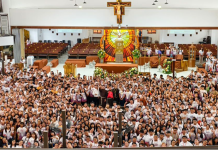

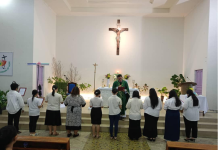




,团长(右三),以及小军友们。(图:刘谊恒(Moses)-218x150.png)
